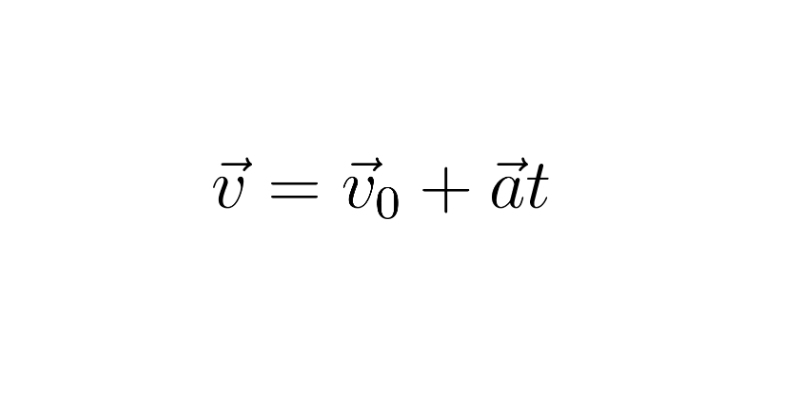The First Kinematic Equation of Motion is derived from the definition of acceleration, which is the rate of change of velocity with respect to time. If an object starts with an initial velocity v_o, and undergoes a constant acceleration a for a time interval t, then the final velocity v of the object can be found by starting with the initial velocity (v_o), and then adding the product of acceleration and time (at).
The equation can also be rearranged to solve for any of the four variables involved in the motion of the object. For example, if the initial velocity, acceleration, and time are known, the equation can be rearranged to solve for the final velocity of the object. Alternatively, if the final velocity, initial velocity, and time are known, the equation can be rearranged to solve for the acceleration experienced by the object.
See Algebraic Derivation of Kinematic Equations of Motion.
